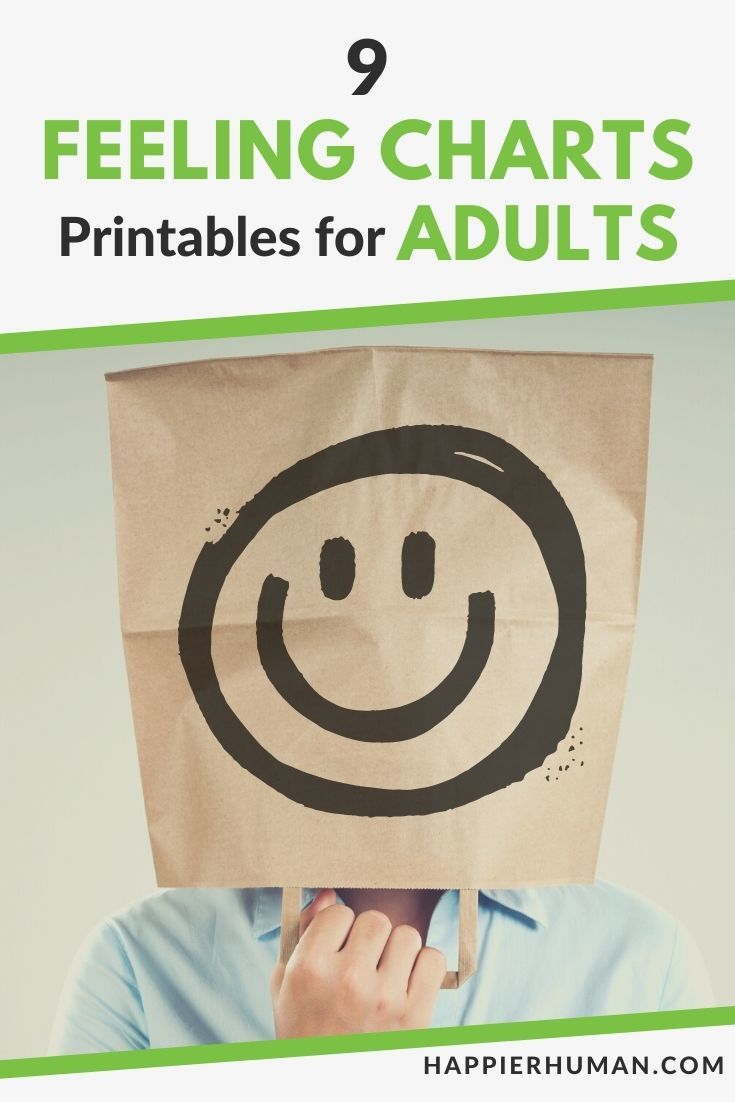There might be affiliate links on this page, which means we get a small commission of anything you buy. As an Amazon Associate we earn from qualifying purchases. Please do your own research before making any online purchase.
Are you looking for feelings charts printables that can raise your emotional awareness?
Or perhaps you are seeking a way to help manage your emotions better?
People expect you to be mature and considerate because you are a grown-up. They put pressure on you because they assume that you already know how to identify your emotions and make wise decisions.
But acting with maturity is not always easy.
Understanding your emotions can a difficult task, especially when you have so much to think about. As an adult, you have an endless list of responsibilities, so you tend to get lost when it comes to dealing with your feelings.
Moreover, you often end up beating yourself up for not knowing what to do and how to react whenever you become emotional. You know that something needs to be done, but you can’t pinpoint what it is because you can’t understand your own feelings.
Fret not—we’ve got you covered.
In this article, we share with you nine feelings charts printables that you can use to help you solve this dilemma. These feelings charts are designed to help you increase your emotional awareness and understand yourself better.
With these charts, we hope that you will be able to name and identify your emotions. Furthermore, we hope that you will be able to make wiser, better decisions.
(Side note: One of the best ways to increase your happiness and life satisfaction is to plan your day, so you focus on your TOP goals. To get started, watch this free video that details the 7-minute habit for planning your day to focus on what's important.)
What You Will Learn
Let’s check them out!
1. Intensity of Feelings
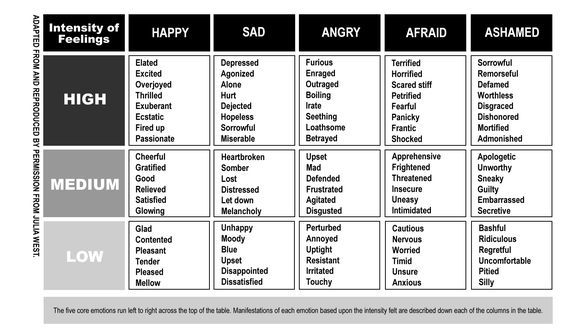
via 3diassociates
This chart includes the five core emotions and other related feelings, organized according to intensity level. This chart has been used to study the importance of PSHE (personal, science, health, and economic) education, but it is also a good feelings guide for adults.
2. Emotions in Detail
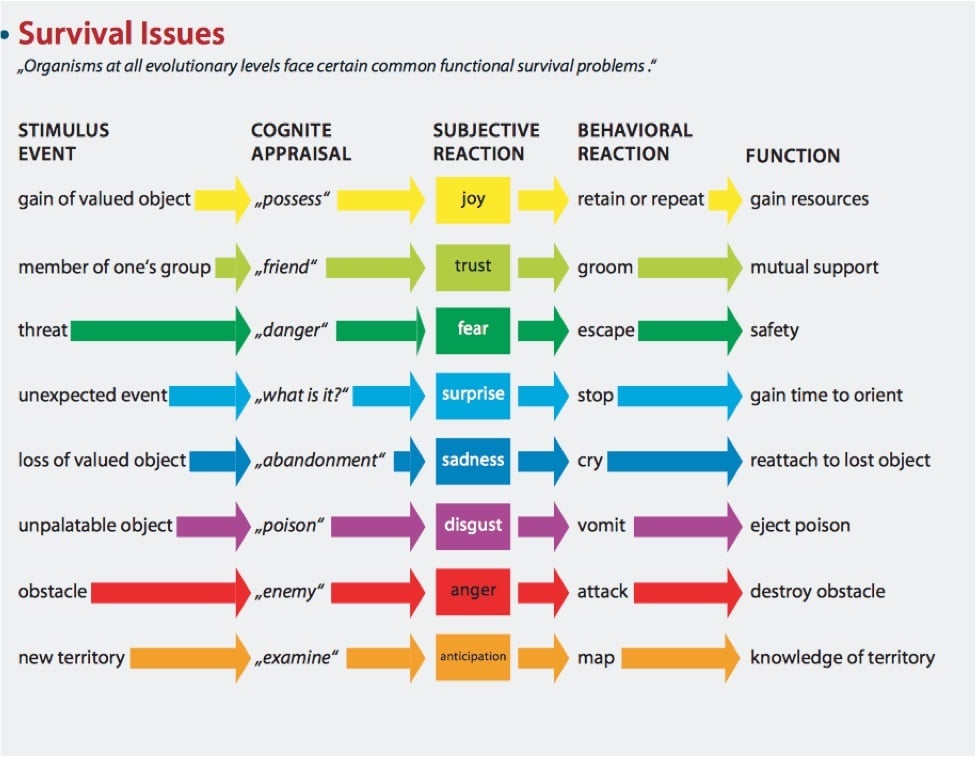
This image is an explanation of how our survival instinct is activated whenever we start to feel sudden emotions. According to Plutchik’s Sequential Model (emotional chart), our feelings are always triggered by certain stimuli, and have corresponding behavioral reactions. If you want to better understand how this process works, this chart is a great place to start.
3. Friendzy Emotion Chart
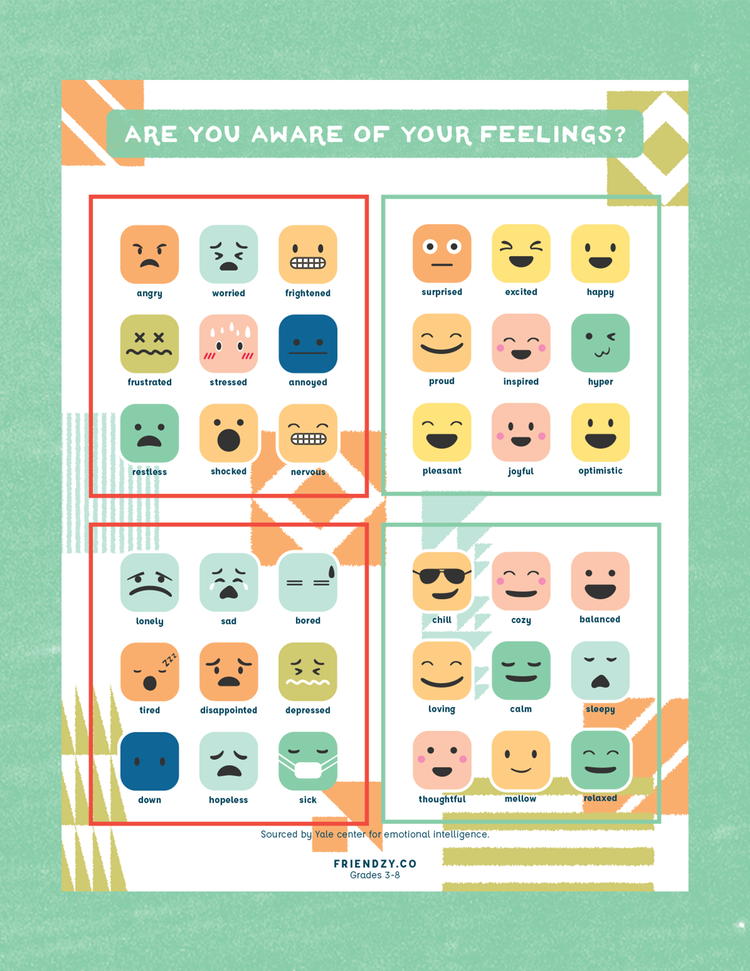
via friendzy
The Friendzy team believes that if people can identify and name their emotions, then it will be easier for them to manage their attitudes and behavior. It will also be a lot simpler to communicate and build relationships. Hence, they created this emotion chart to help both adults and young people become more aware of their feelings.
4. Dynamic Emotional Intelligence Reference Guide
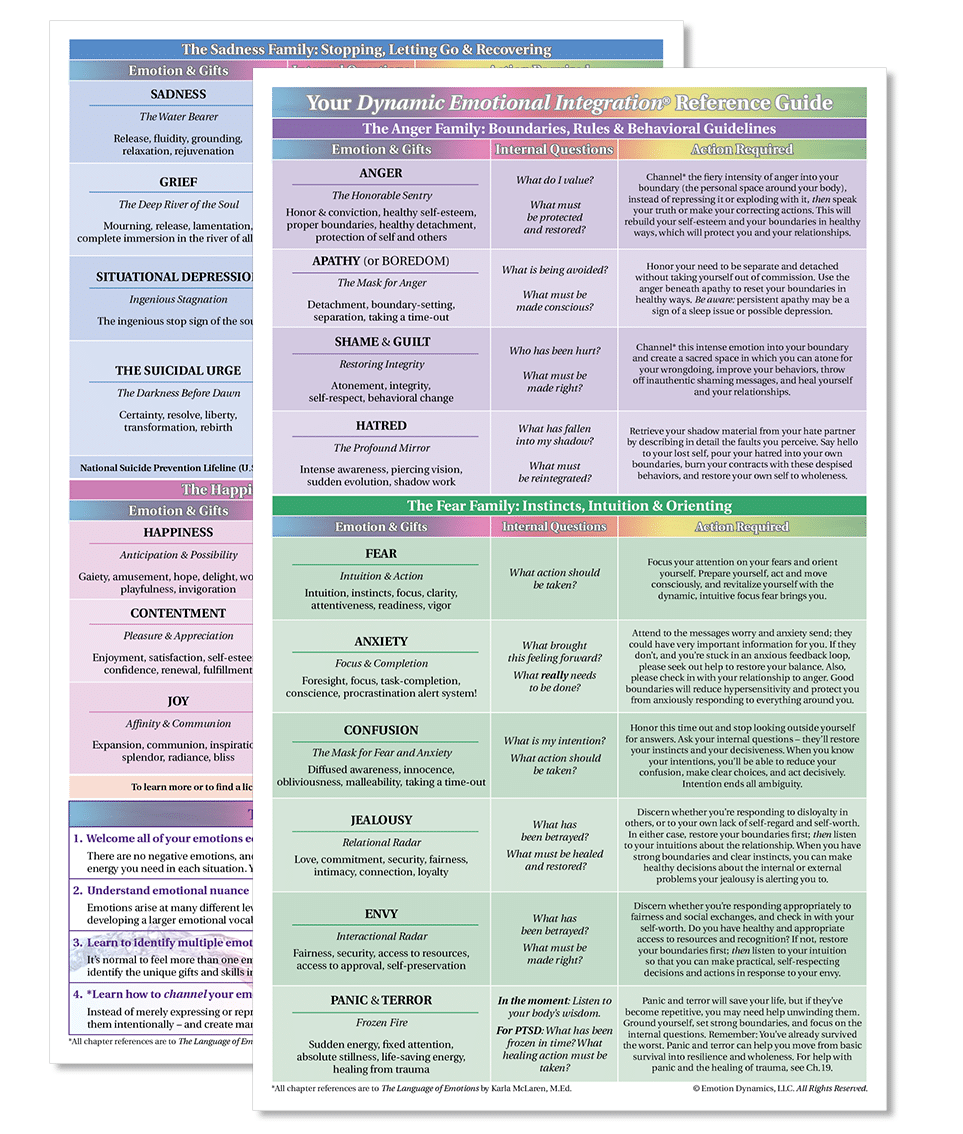
via karlamclaren
Here’s another very detailed chart called the DEI (Dynamic Emotional Intelligence) Reference Guide. You will need to pay to get a copy of it. Nevertheless, in our opinion, the cost is worth it since this chart can thoroughly guide you in how to deal with your emotions.
5. Feelings Thermometer
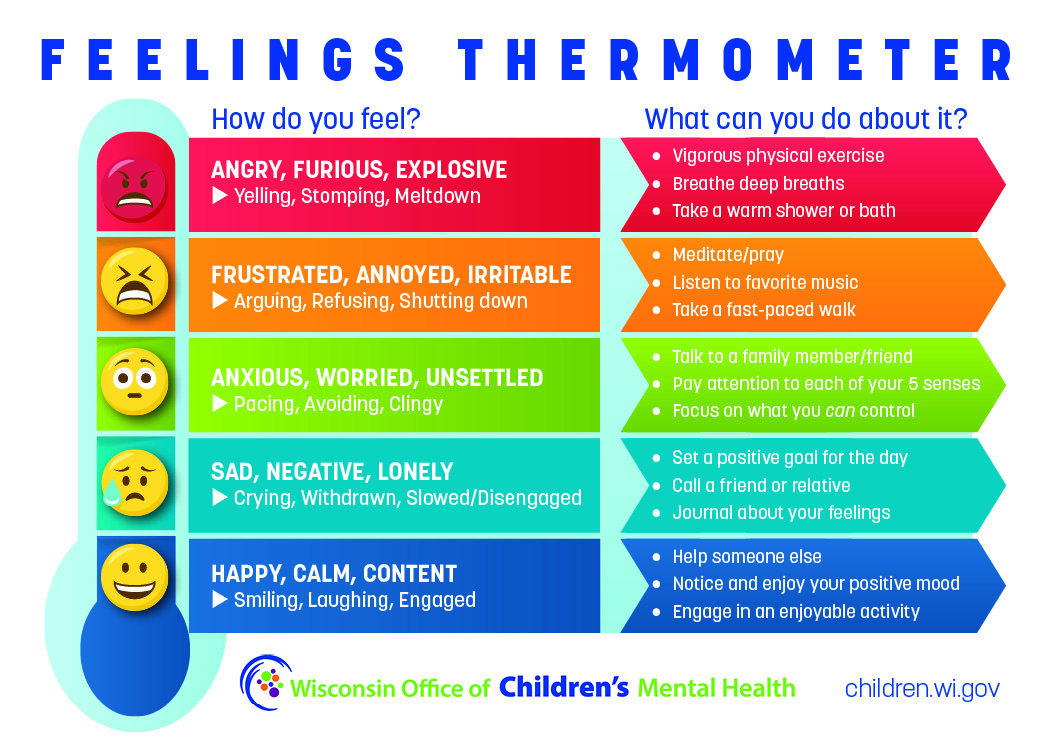
via children.wi
The Feelings Thermometer was originally developed to help children who are emotionally challenged deal with their feelings. However, the Wisconsin Office of Children’s Mental Health suggests that it is also suitable for adults who’d like to learn how to manage their emotions. The chart has a “solution” section called “What can you do about it?” that suggests actions to help you cope with and respond peacefully to your feelings.
6. The Feelings Circle
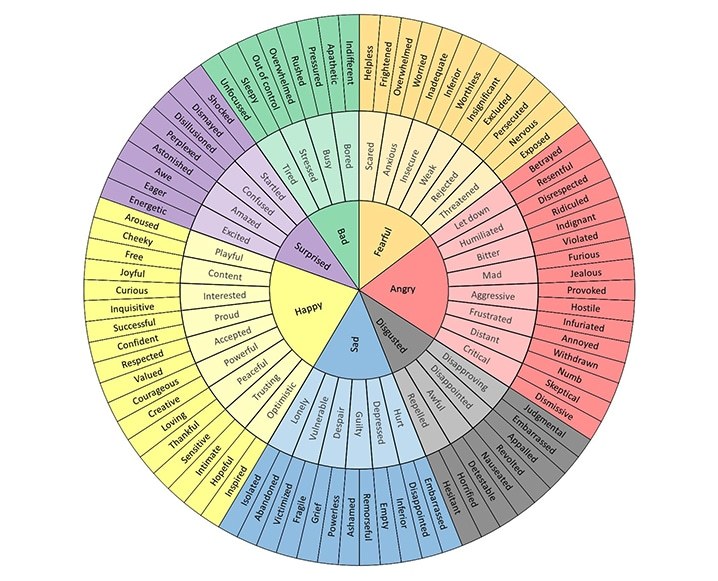
via thechalkboardmag
Here’s an emotion wheel that you might want to check to help you be more articulate when explaining your feelings. As you can see, it has the core feelings (innermost circle), which are the easiest to name and explain. But as you go further out toward the margins, there are more words that can help you be more specific about what you are feeling.
7. How Did I Feel Today?
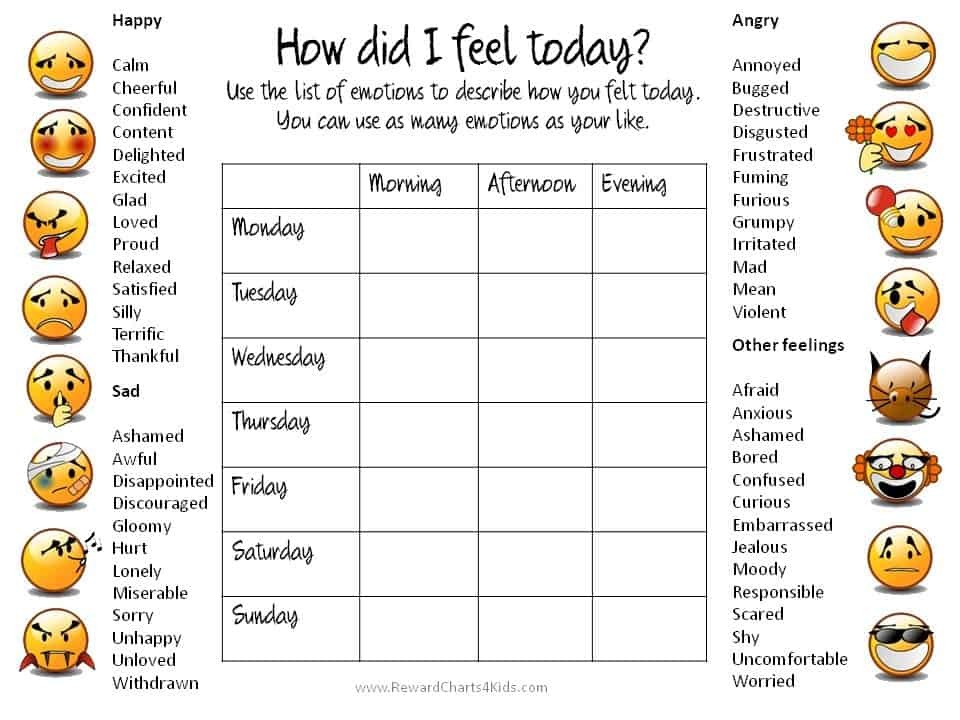
We like this feelings chart even though it is a little childish. It aims to capture exactly what you have been feeling during the week. You log your emotions three times a day so that you can do some self-reflection once it’s complete. There is also a list of words you can use so you don’t have to go searching for the right description.
8. List of Emotions
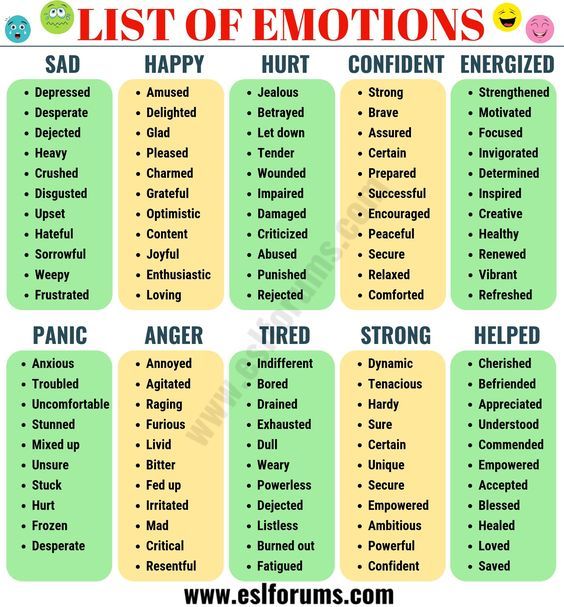
via eslforums
This printable from ESL Forums is helpful for those who want to learn more words that can describe their emotions. While many of the words (e.g., happy and joyful) seem to be synonymous, there are varying levels of intensity for each word, and they can mean different things than you might think.
9. Awareness of Emotion
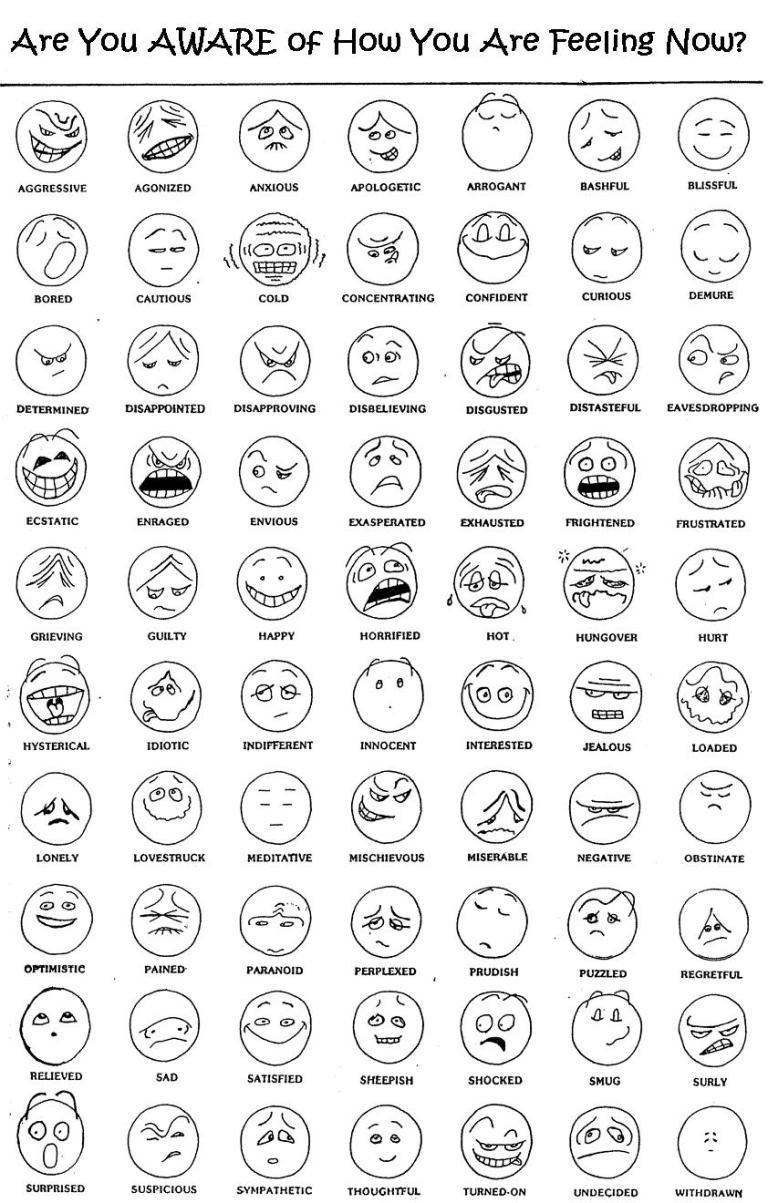
The way you feel can significantly affect the way you think. Hence, it is very important to be aware of your emotions in order to achieve inner peace and mental clarity. Check out the printable above if you want to learn more about what emotions are and what they look like.
Conclusion
Understanding your emotions and making decisions based on this understanding can be difficult. You need to be able to distinguish between and confirm your feelings without being affected by external factors.
While this isn’t always easy, the skill can be developed through practice. Eventually you’ll be able to quickly decide on things that matter because you will have mastered how to appropriately deal with your emotions.
We hope that the feelings charts we shared above can help you develop that skill. Check out a few of them and see for yourself which one best suits your preferences.
Finally, if you want to increase your happiness and life satisfaction, then watch this free video that details the 7-minute habit for planning your day to focus on what's important.
